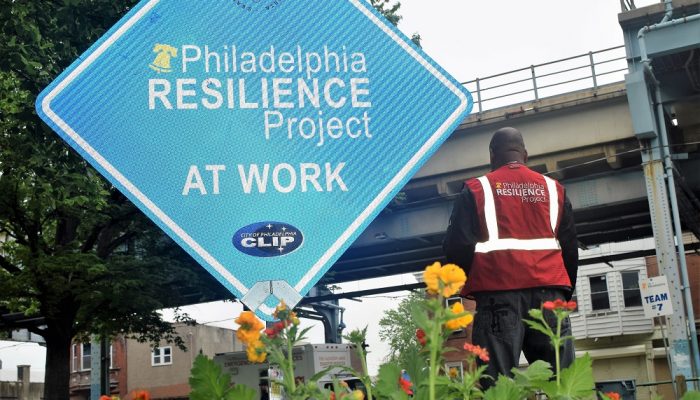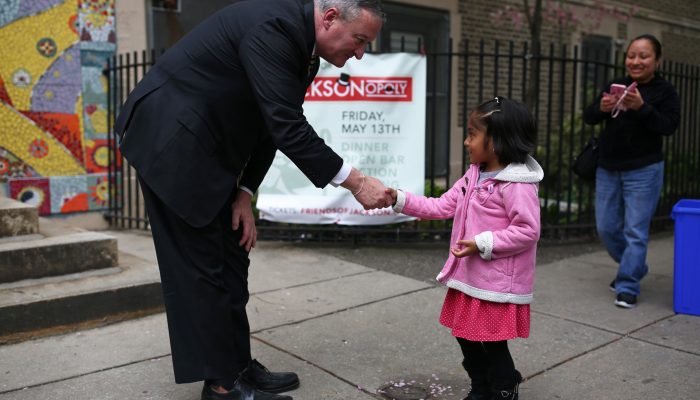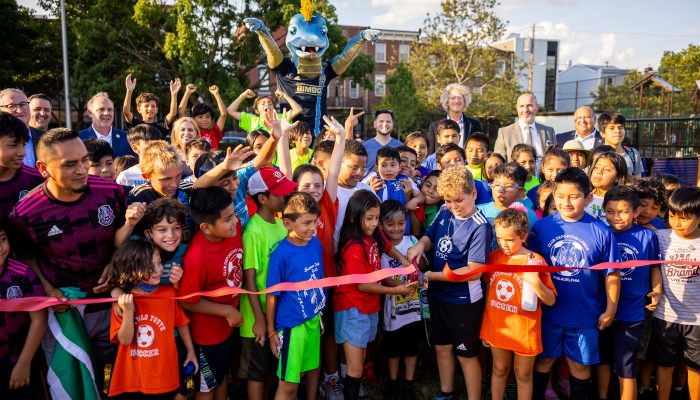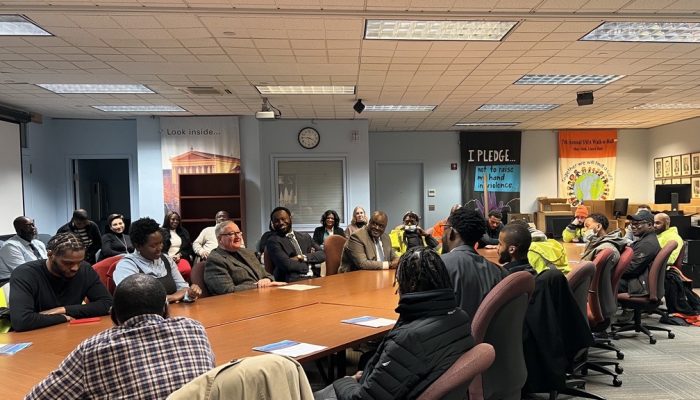In October 2018, Mayor Jim Kenney signed an executive order declaring an emergency response to the growing opioid crisis in Philadelphia. By November, 35 City offices and agencies mobilized to tackle the epidemic, with the ultimate goals of helping people and strengthening the communities hit hardest, namely Kensington.
The multi-departmental effort, called the Philadelphia Resilience Project (#ResilientPHL), organized around seven key mission areas.
Our new report tells the story of our efforts, showcases the results we’ve seen so far, features a timeline of the work, and describes our lessons learned and next steps. This information comes from the people on the ground doing the work every day and includes insight from community members and people who have benefited from this work.
While we’re proud of our work and accomplishments so far, and we know there’s much more to be done. That’s why Mayor Kenney announced that he is extending the emergency response effort through the end of 2019. We will continue to fight this epidemic and reclaim our communities.
Here’s an overview of our seven mission areas, or goals, and what we’ve done to make progress in these areas.
Clear major encampments
By the time the Resilience Project began in November, our team had already successfully and humanely closed two of the four large encampments in Kensington. We used that experience to address the remaining locations, which were hubs for drug use, criminal activity, and dangerous conditions.
Highlights of our work:
- Cleared all major encampments in Kensington—and they have not been re-encamped
- Developed a humane, effective resolution pilot in early 2018
- Coordinated services including housing, health services, and treatment
- Earned a positive evaluation from University of Pennsylvania researchers for our compassionate and permanent resolution
Reduce criminal activity
While Kensington neighbors take pride in their community, this section of the city has been impacted by drug-related crime for decades. Reducing crime requires complex and nuanced approaches. We’re relying on collaboration among City offices, partner organizations, and residents as well as on data-informed law enforcement initiatives.
Highlights of our work:
- Expanded Police-Assisted Diversion program to the Resilience area
- Began “Safe Routes to School” with six schools
- Installed 1,000 LED street lights and additional cameras
- Launched a warrant initiative resulting in 180 arrests
Reduce the number of unsheltered individuals
The number of people on the street in Kensington rose dramatically to 700 in summer 2018—reversing the trend of gradual reduction in Philadelphia’s street homeless populations. Thanks in part to the Philadelphia Resilience Project, the current street homeless population in Kensington has reduced by about half, compared to last summer. While this shows significant progress, it also means that there are still hundreds of people on the street. Homeless outreach, lead by the Office of Homeless Services, will continue to in the area to help people access housing.
Highlights of our work:
- Expanded emergency and temporary housing to 220 beds
- Added 210 long-term housing opportunities for those most in need
- Provided beds for over 500 people
Reduce trash and litter
We’re working to revitalize Kensington, and that means improving the quality of life in the area. Through major cleanups, mural projects, needle disposal, and other programs, we’re helping to beautify the neighborhood and build pride among residents.
Highlights of our work:
- Hosted seven large-scale volunteer cleanups
- Removed 600 abandoned vehicles
- Installed 12 needle drop boxes in Kensington, resulting in the collection of 5,000 needles—which otherwise would have been discarded on sidewalks, streets, parks, and other public spaces
- Started weekly street sweeping
Reduce overdoses and the spread of infectious diseases
Opioids have been called the worst public health crisis in Philadelphia in a century—since the influenza pandemic of 1918-19. One of the most important goals of the Philadelphia Resilience Project is to save the lives of people affected by opioid use disorder.
Highlights of our work:
- Conducted nearly 2,500 HIV tests in Kensington
- Distributed opioid prescribing guidelines to 16,000 healthcare providers by mail and another 1,300 by direct, in-person outreach
- Provided all Fire Department ambulances with “leave behind” naloxone (Narcan) to distribute after responding to overdose calls
- Reduced fatal overdoses 8% in 2018 compared to 2017, with the sharpest reductions occurring in the Kensington area
Increase treatment options
National and Philadelphia data indicate that 1 in 5 people experience some form of mental illness and/or substance use disorder. In the area of opioid use disorder, the most effective treatment is medication-assisted treatment (MAT).
Highlights of our work
- Launched Treatment Availability Database (TAD), which provides real-time information about availability of beds
- Made policy changes to increase medicine-assisted treatment (MAT) across the system
- Expanded “warm hand-offs” at Temple’s Main and Episcopal campuses, meaning we help people receiving medical treatment access addiction services
- Contracted with First Step Staffing to connect individuals in recovery to entry-level employment
- Created an EMS alternative response unit (AR-2), staffed by both paramedics and case managers to offer “warm hand-offs” after responding to an overdose
Mobilize community resources
Recognizing that the City cannot do this work on its own, we have focused on engaging with community members. We’ve organized monthly volunteer cleanups and weekly community meetings to empower residents to become community leaders who encourage the positive change they want to see in their neighborhoods.
Highlights of our work
- Formed and convened a Community Advisory Committee
- Recruited hundreds of volunteers
- Hosted 25 community and civic meetings
- Launched dedicated bilingual Philly311 “pod” to resolve quality-of-life service requests faster




